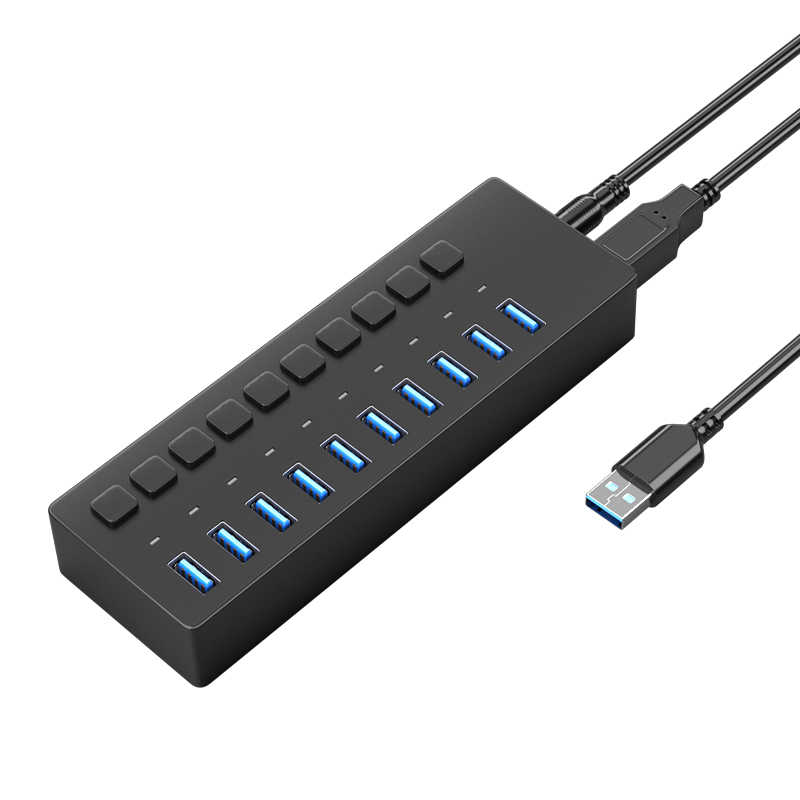The USB3.0 system includes USB host, USB device and USB interconnection.
The host initiates most activity on the USB bus. It sends data to or requests data from the device.
The USB device responds to the host. It cannot initiate any data transfer except the Endpoint Ready (ERDY) signal.
USB host
A USB host package consists of a host controller and a root hub. The root hub provides additional connection ports to the host controller. The host can be connected to one or more devices.
The USB system has only one host. The USB host initiates and schedules all transactions on the USB bus and acts as the bus manager. It consists of an ultra-high-speed communication layer on the host side: the host controller and root hub; and related system software, device drivers or application software.
The USB host supports all USB speeds and is backwards compatible, so it can handle both the newer USB 3.0 SuperSpeed traffic and the existing USB 2.0 High Speed (HS), Full Speed (FS) and Low Speed (LS) traffic. It detects when devices connect and gives each device a unique address, which is used along with routing information to forward packets to the destination device.
The USB host also provides power to all devices connected to it.
USB device
The USB device receives requests from the host and responds to them. It is a slave device on the bus and cannot initiate any data transfer except ERDY. It consists of ultra-high-speed communication layers on the device side: device controller and device/function. USB devices support SuperSpeed and HS operation, one at a time, with the option of FS and LS modes.
USB hub
USB hubs provide additional connection points/ports to the host computer. The USB system allows up to five hubs to be linked and up to 127 devices to be cascaded, including the root hub. USB hubs use the routing string in the header to forward packets to a specific device/hub. It should be self-powered and should always provide power to all devices connected to its downstream ports when the host is powered; but only if the hub supports charging applications when the host is powered off.
A USB Dual Role Device (DRD) can act as either a host or a device, supporting protocols that enable it to swap roles and find its connection status when the USB bus is powered off. It also supports the protocol used in USB 2.0 for similar purposes.
USB signal
A USB 3.0 cable has three USB data paths: one twisted pair signal pair (half-duplex) for USB 2.0; and two twisted pair signal pairs (Tx and Rx) for USB 3.0. There is also a power pair. The cable is available in lengths up to 3 meters, is color coded blue, and supports SuperSpeed operation, as well as backward compatible LS/FS/HS.
In USB 3.0 terminology, the upstream port faces the host, while the downstream port faces away from the host. The host receives data as IN and sends data as OUT.
